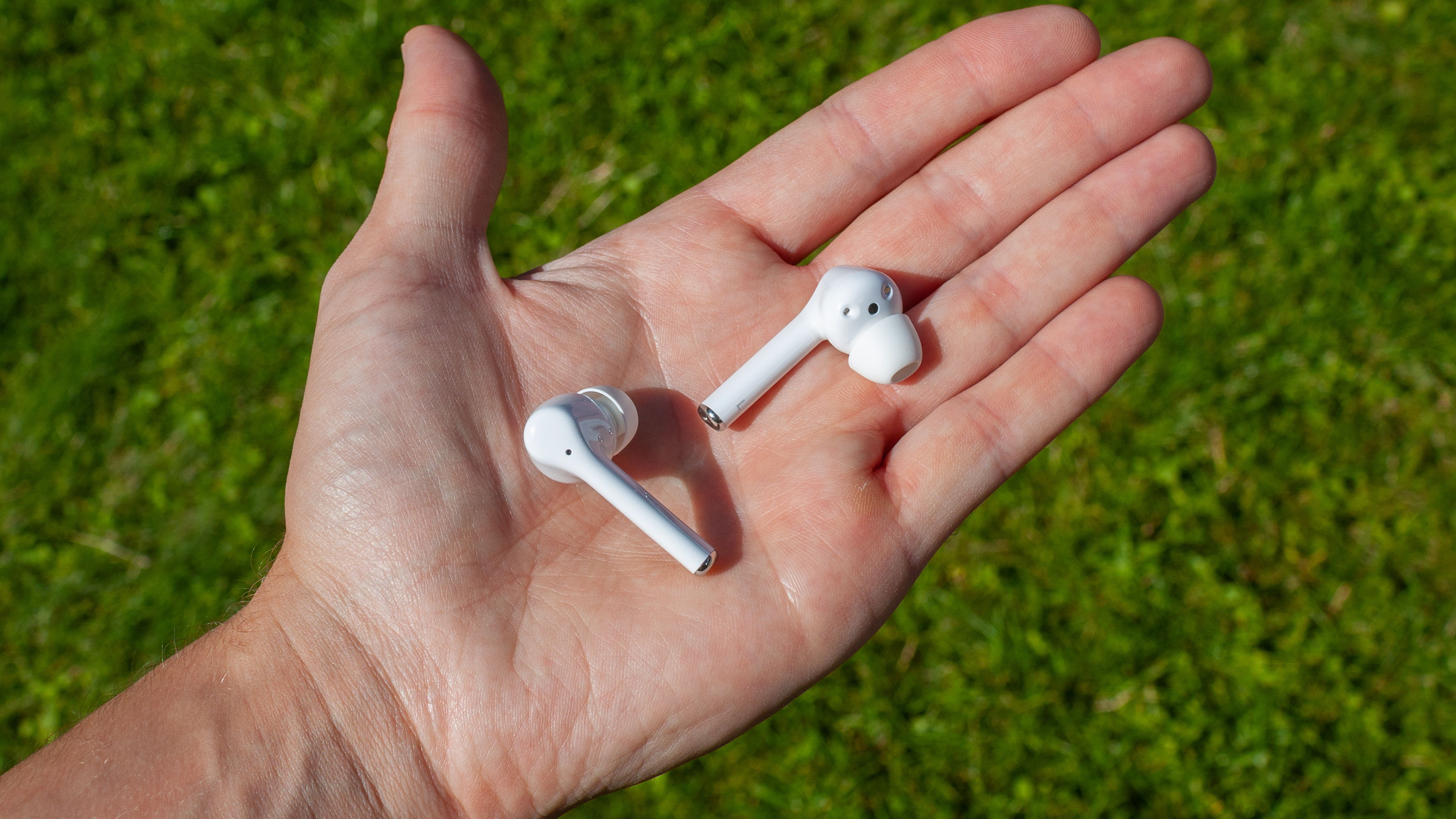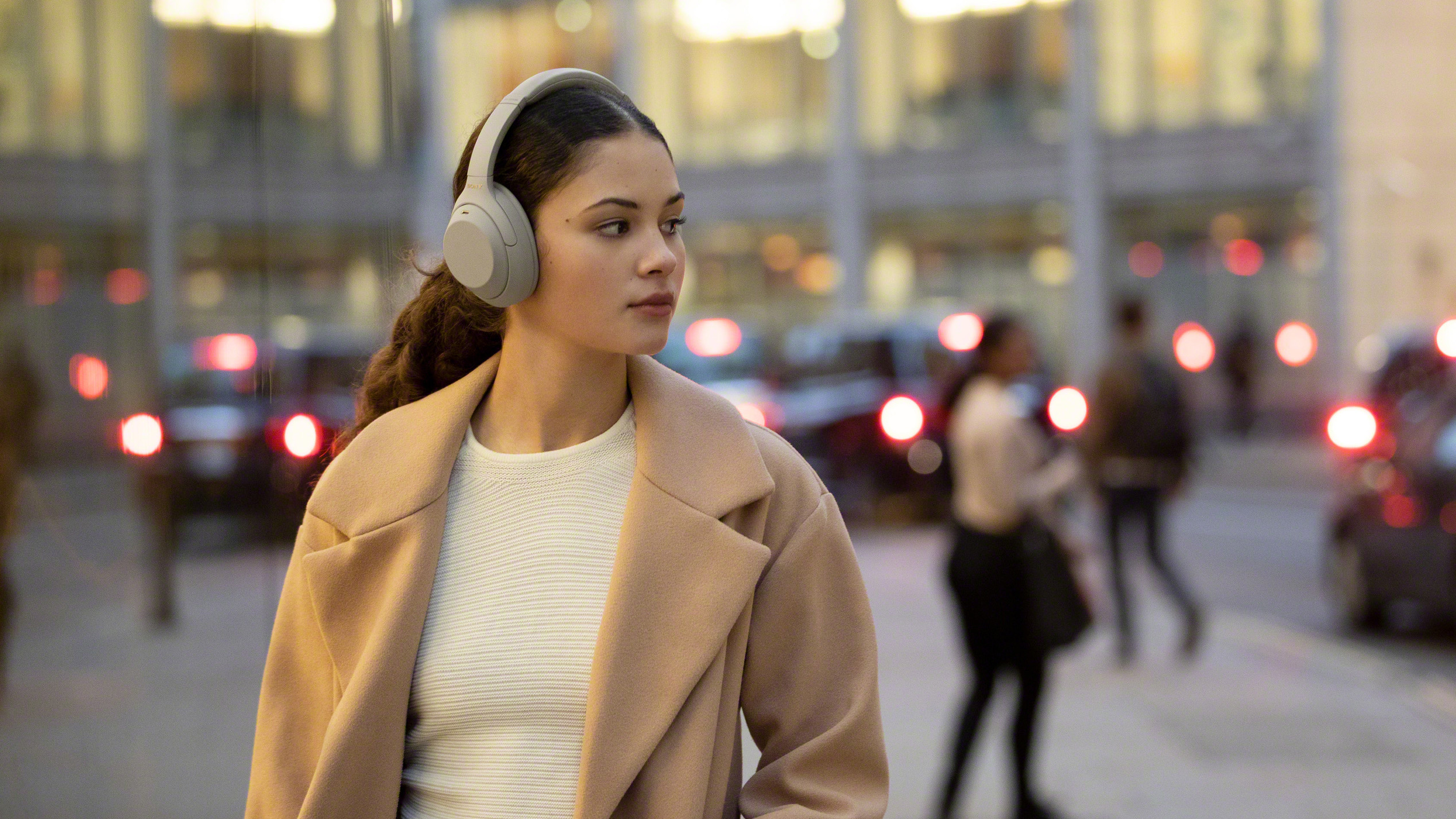Walking alone at night? Choosing the right headphones could help you feel safer
A strong case for bad sound isolation (that shouldn’t exist)

If I’m walking anywhere alone at night there’s no way I’m putting headphones in. I don’t want to make myself appear in any way more vulnerable than I may already feel,” says Ellie, 28.
As a tall man who’s never had to think about the safety implications of choosing headphones, I’m not the prime candidate to be writing a piece on women walking home alone at night.
Initially, I thought I may have a sliver of insight into the sense of powerlessness women experience that might make me suited to explore this issue. I'm a gay man and have been heckled a fair bit when holding a partner’s hand in public – especially in the early 2000s – so I seldom do it, even to this day. But it’s not the same.
That is why for the most part in this piece, you'll be hearing accounts directly from women, compared to the experiences of men – although it goes without saying that people of any age, gender and sexual orientation can find themselves in dangerous situations when out alone after dark
As part of my research, I asked 15 men and 15 women about their headphone use, specifically at night in London. After just a couple of conversations, it became clear: an infrequent and fleeting thought for me – ‘Will I be safe walking home tonight?’ – is an overriding daily consideration for women. This impacts what they wear, how they get from A to B, and how they listen to music.
None of this is news, but there is a link between a category of headphones with an open-fit design and safety. That’s where I can at least feed in. Last month, as Huawei launched the FreeBuds 4, its latest premium open-fit earbuds, I was left thinking – open-fit buds are hardly being launched these days. It’s been more than two years since Apple updated its open-fit AirPods, and it’s little wonder from an audio quality point of view.
What are open-fit earbuds?
Open-fit earbuds mean no sound-seal in your ear and less effective noise isolation than rivals with silicone or memory foam eartips; in other words, you can hear what’s going on around you.
Sign up for breaking news, reviews, opinion, top tech deals, and more.
So, what’s the point? Aren’t headphones about immersion? Even if you do want to be aware of your surroundings, many closed-fit headphones include something called awareness or transparency mode. This allows the headphones to pick up the sounds of your environment using inbuilt microphones, mixing them back in with your music.
For me, awareness mode is useful, but still feels like a clumsy workaround that ruins your music. The only solution that balances decent sound and audible environmental sound are open-fit buds like the AirPods and FreeBuds 3 and 4.
Over the last year I’ve been pretty much exclusively using the FreeBuds 3. This is in spite of also having a pair of the over-ear Sony WH-1000XM4, which are worlds apart when it comes to sound quality, and a couple of sets of in-ear buds from OPPO and Samsung, which feature better sound isolation. For me, it’s mainly down to voice call quality, road safety, and politeness – being able to communicate with cashiers, for example.

Sound quality above all else?
For most of the men I spoke to, sound quality was paramount. Emile, 40, said, “I'm not concerned about headphones and my safety in terms of being mugged or attacked while out and about. I wear good quality in-ear buds, which are more convenient than over-ear headphones, and I usually have noise-cancelling turned on wherever I am.”
Another shared minor safety concerns: “I alternate between over-the-ear headphones and wireless in-ears. I very rarely have safety as my main concern – big headphones act as both my entertainment and a way to show people I don't want to be talked to. I only pause the music or turn the volume all the way down if I see a situation I'm not comfortable with,” explained Sohaib, 36.
This notion of headphones as a means of keeping passers-by at bay was a common theme in both men and women. Matt, 36, said that he “might put his AirPods into awareness mode if I felt threatened in any way”.
“I tend to keep them in so people won’t stop and talk to me. Safety isn’t a primary consideration when it comes to wearing headphones. More so convenience, which is why I prefer wireless over wired alternatives”, he continued.
A different story for women
As familiar as these responses were to me, they were at odds with virtually all of the women who were asked the same questions. Whether it involved a conscious sacrifice in quality in favor of a better sense of their surroundings, opting to only use one earbud to keep an ear free, or categorically not wearing headphones outdoors, 14 out of the 15 women who shared their attitudes towards headphones and safety had very different perspectives to all the male respondents.
I really miss the immersive quality that noise-cancelling headphones provide but it’s just not worth the risk
Charlotte, 35
Heather, 37, said: “I walk with either no headphones or only one earbud in. I'll also try to hide the earbud with my hair so people can't see I'm listening to anything. Cables are the worst because they are pretty visible, and I wouldn't even think about noise-cancelling over-ear alternatives when walking alone.”
Only using one earbud was one of the more popular ways of staying aware, even amongst a respondent who prioritizes the quality of her listening experience: “I am a musician, so I hate listening to music with only one headphone in,” says Mara, 25.
“But, if I'm walking at night, I have to. The noise-cancelling AirPods Pro are so helpful to block out the noisy underground when I travel, but I’d have to be super aware while using them – always looking around and being on high alert in case someone is following me.”
This willingness to compromise on audio quality in favor of safety was another recurring theme, even amongst an avid podcast listener and production professional. “I had a wonderful pair of noise-cancelling headphones that I loved and used until they finally stopped working, exhausted, and despite my love for them, I decided against a new pair,” says Charlotte, 35.
“I’ve grown more mindful of the need to be aware of my surroundings, not only late at night, but on public transport, walking through quiet residential streets, and when running in parks,” she explains.
“I now use in-ear wireless headphones, and as soon as I’m out onto the street I use one earbud only when listening to music. It’s largely due to fear of being assaulted, but on the milder end of the scale, it’s about being startled when approached. I really miss the immersive quality that noise-cancelling headphones provide but it’s just not worth the risk.”
When I run through a woodland area even for 30 seconds, especially at dawn, fear drives me to turn the music to silent
Laetitia, 39
The difference between the responses from men and women cannot be overstated. While the first thing I do when walking home from the station is plug in my earbuds, Rachel, who lives a few hundred yards from my apartment told me: “I don't listen to music on the way home from a night out at all. I don't have wireless earbuds or wear a backpack so there would be a cable going down into a pocket and I’m not okay with that signpost that I’m listening to music.”
“Really, it’s for awareness as I wouldn't be able to hear footsteps behind me with headphones on”, she explained. “I need to have my wits about me.”
Safety isn’t just a primary concern when looking at late-night walks. As touched on in an earlier response, the need to be safe when exercising is also a factor. Laetitia, 39, said it was her main safety concern: “When I run through a woodland area even for 30 seconds, especially at dawn, fear drives me to turn the music to silent, which I tell myself is total paranoia.”
“However, I know it’s not paranoid at all, which is the sad fact of it,” she adds.

A necessary evil?
For many, the idea of not using headphones, or changing how you use them to stay safe won’t come as any surprise. In 2018, after a string of sex attacks near the Cricklewood area of London, a member of the Metropolitan Police gave advice to women which included: "... don't use earphones or handheld devices” when walking home at night.
This message was shared once again in the wake of the murder of Sarah Everard, who was believed to be wearing Bluetooth headphones at the time she was abducted. These calls led to a debate on whether recommendations of this nature constitute victim-blaming, or whether they’re a safety necessity.
Subverting the general consensus of ‘no headphones at night’ amongst women, two standout responses actually referenced intentionally wearing headphones as a means of fending off unwanted attention from men. “I actively do wear them so men know I can’t hear their catcalls/advances, even if I’m not playing music, so I’m aware of my surroundings,” says Chantelle, 28. “Sometimes if I feel unsafe I will pretend I’m having a conversation with someone I’m going to meet who is ‘just around the corner.”
Nicole, 27, said: “Sometimes when someone says something to me or makes me feel uncomfortable, I use the fact that I’m wearing headphones as a way to pretend I haven’t heard what they’ve said, and keep on walking, when in fact they’re muted.”
What are the options?
The question for anyone concerned about safety when using headphones is, what options are there for someone looking for high-quality audio matched with environmental awareness? The obvious choice – you could opt for the Apple AirPods if you want an open-fit bud.
The sound quality from Apple’s open-fit buds is fine, however, if you want noise-cancelling with an open-fit design to drown out the din of a train or plane while still staying aware of other peripheral noise, Huawei is leading the charge with its FreeBuds 3 and FreeBuds 4.
In fact, Huawei is the only earbud-maker that’s delivering the kind of quality you’d expect from today’s best headphones matched with this style of bud. There are other lower-cost alternatives from OnePlus, for example, but the OnePlus Buds' quality is sorely lacking, especially when it comes to voice calls.
Another boon for the Huawei FreeBuds is that they are also available in black, which makes them less conspicuous and easier to conceal with long hair or a hood, and you can use them one at a time, with each bud sporting a microphone for voice calls.
I wish this article didn’t exist, and, like the men I spoke to while researching it, I will probably keep using my headphones and earbuds in exactly the same way I have been for years, day or night. If, however, you can relate more to the women featured in this piece and are looking for a new pair of buds, hopefully, you feel more confident in picking up a pair that balance peripheral sound awareness, decent quality, discreet looks, and one-bud-at-a-time functionality for those times you do feel comfortable using them in public.

Basil Kronfli is the Head of content at Make Honey and freelance technology journalist. He is an experienced writer and producer and is skilled in video production, and runs the technology YouTube channel TechEdit.